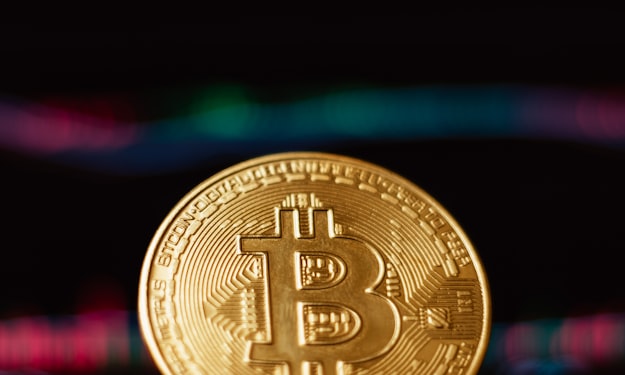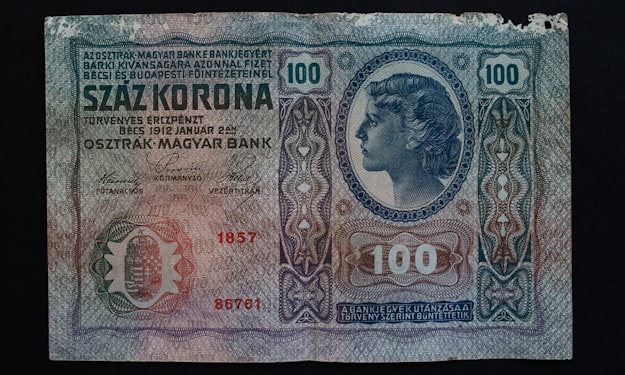Daniel Joseph
Bio
Stories (15/0)
Euro-currencies
Reality is always more complicated than theory, especially in banking. Currencies can actually be created and exist outside of their domestic zones or home jurisdictions. Examples are ‘Euro-currencies,’ e.g., Eurodollar, Euro-euro, Euro-sterling. The Euro-prefix originated from Europe the region, and should not be confused with:
By Daniel Joseph 2 years ago in Education
Public Key Cryptography
The Caesar cypher just described is known as a symmetric cypher because the same key is used to encrypt and decrypt the message. In public key cryptography, the key used to decrypt a message is different (but mathematically linked) to the key used to encrypt the message. Public key cryptography is described as an asymmetric scheme, because the key used to decrypt the message is not the same as the key used to encrypt it. This makes it more secure. Using asymmetric cryptography, if you want to receive encrypted messages you create two mathematically linked keys: a public key and a private key. Together they are called a key pair. You can share your public key with the world, and anyone can use it to encrypt messages for you. You use your private key, known only to you, to decrypt those messages. Anyone who sends you encrypted messages using your public key knows that only you can decrypt them.
By Daniel Joseph 2 years ago in Education
HASHES
A hash function is a series of mathematical steps or algorithms that you can perform on some input data, resulting in a fingerprint, or digest, or simply, a hash. There are basic hash functions (not used in blockchains) and cryptographic hash functions (used in blockchains). We’ll need to understand basic hash functions before moving to cryptographic hash functions.
By Daniel Joseph 2 years ago in Education
DIGITAL SIGNATURES
Digital signatures are used extensively in Bitcoin and blockchains for creating valid transactions ‘signing’ transaction messages to move coins from your account to someone else’s. What are digital signatures, in a cryptographic sense? Well, we can afford to be a bit pedantic here. Digital signatures are a subset of electronic signatures, which can take a number of forms.
By Daniel Joseph 2 years ago in 01
Money Through the Ages (Part 2).
345 BCE: Origins of the Words Mint and Money. In the centre of Rome a temple was built, dedicated to goddess Juno Moneta. Juno was the goddess of protection and Moneta is derived from the Latin monere, which means ‘to warn or advise’. It is said that Goddess Juno gave warnings or advice on at least a couple of occasions. First, when the Gauls sacked Rome in 390 BCE, Juno’s sacred geese gave Roman commander Marcus Manlius Capitolinus a heads up that the Gauls were coming, allowing him to protect the Capitol. Second, during an earthquake when a voice from the temple advised the Romans to sacrifice a pregnant sow34. From 269 BCE, the Roman mint was located at this temple, and lasted some centuries. The English words ‘mint’ and ‘money’ are derived from Juno Moneta.
By Daniel Joseph 2 years ago in Trader
A BRIEF HISTORY OF MONEY— DISPELLING THE MYTHS.
So far, we have discussed cryptocurrencies and how they measure up as ‘money’ as we currently define it. But has money always been the same? In order to understand where cryptocurrencies might fit in, we should try to understand the history of money itself—its successes, failures, and technological innovations. It is a fascinating topic, as there are so many interesting tidbits and common misunderstandings to straighten out. The definitive writing on the subject is A History of Money from Ancient Times to the Present Day by Glyn Davies17 who spent nine years researching the book as Emeritus Professor of Banking and Finance at the University of Wales. His work is summarised by his son Roy Davies on the Exeter University website18. Much of this section is based on the timeline outlined by Roy, used with his permission. Errors and omissions are mine.
By Daniel Joseph 2 years ago in Journal
Good Enough Money
I like to use the concept of ‘good enough money’. If the money you want to use is good enough for your purposes, then that is ok. For example, when I borrow cash from my colleagues to buy my lunch, sometimes I pay them back in Grab credits. Grab is a ride-hailing app similar to Uber, but localized for Asia, and it also has a wallet function which you top up with your credit or debit card. The credits are denominated in local currency and can be used to pay for journeys, sent to other users, or used to pay for goods in some shops.
By Daniel Joseph 2 years ago in Trader
Fiat Currency and Intrinsic Value
‘Yes, but Bitcoin has no intrinsic value,’ is a comment I hear a lot from people trying to understand why Bitcoin has a price. However, it is not a very good argument against Bitcoin. Fiat currencies—USD, GBP, EUR, etc—have no intrinsic value either. In fact, fiat currencies are defined by not having intrinsic value. That is worth repeating. Fiat currency has no intrinsic value.
By Daniel Joseph 2 years ago in The Chain
Bitcoin as a Store of Value
For now, let’s put aside the argument about whether ‘store of value’ is a valid property of money, or if it should be an attribute of an asset. Instead, let’s ask the question, what do you want from your store of value? What is its job? Is it its job to make you richer so you can buy more toys, or is its job to maintain its value so you can plan your life well? And if the job of the thing is to make you richer so you can buy more toys, how much volatility and downside risk are you willing to stomach? Are we talking about a short-term store of value, perhaps a speculative investment, or a long-term store of value, often a lower risk asset? Bitcoin as a speculative investment has performed amazingly well. Anything that starts at a price of zero, and is not currently at a price of zero, is great.
By Daniel Joseph 2 years ago in 01
The Concept Of Double Spending
Double spending can be defined as an activity when an individual transacts more money than the required amount. Most currencies online face this issue. Traditional currencies keep check on such problems by paying real cash or acquiring the help of reputed third-party organizations like banks, credit card services, PayPal, etc., which all transact the amount and record the changes in the account balances based on the transactions.
By Daniel Joseph 2 years ago in Trader
Why Cryptocurrencies Work
Now that you've seen why compared to gold, fiat currencies aren't real money; it's time to turn our attention to cryptocurrencies as a solid alternative, why they are much closer to gold than money as we know it today is, and why they'd work better than fiat currencies.
By Daniel Joseph 2 years ago in 01













